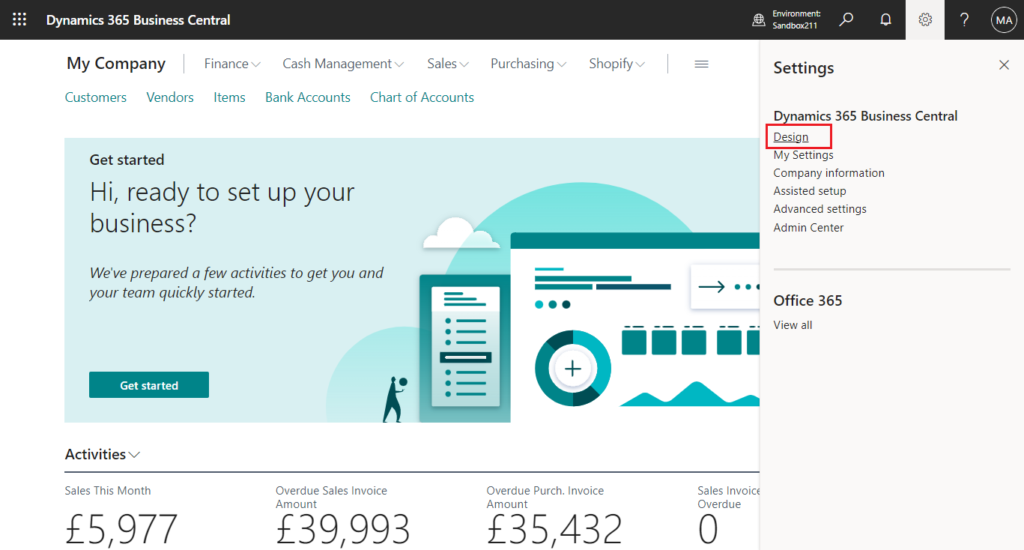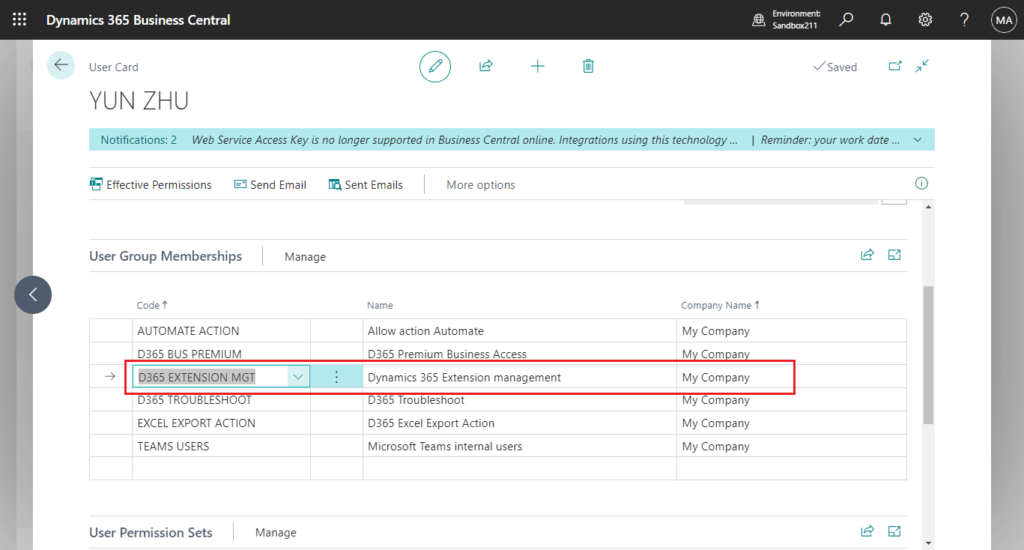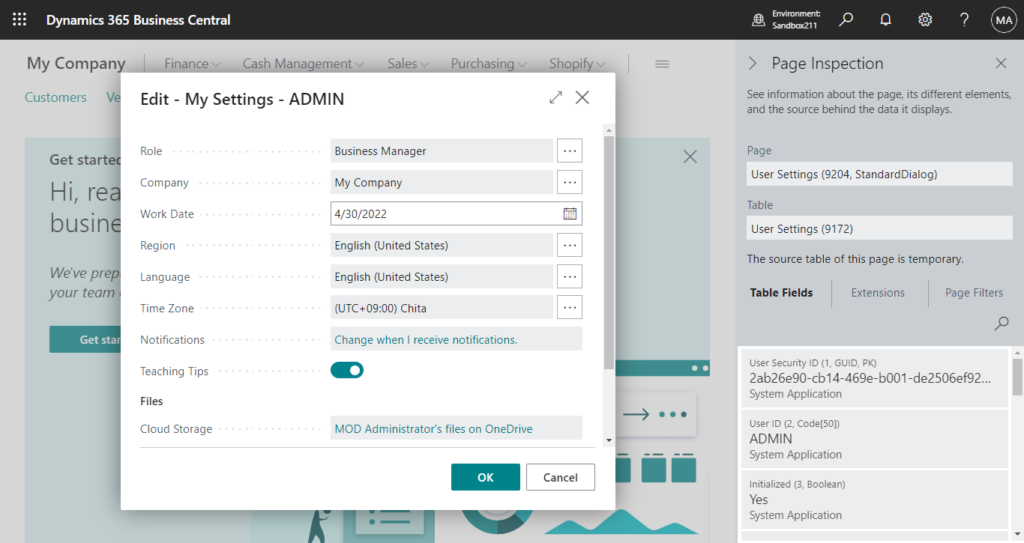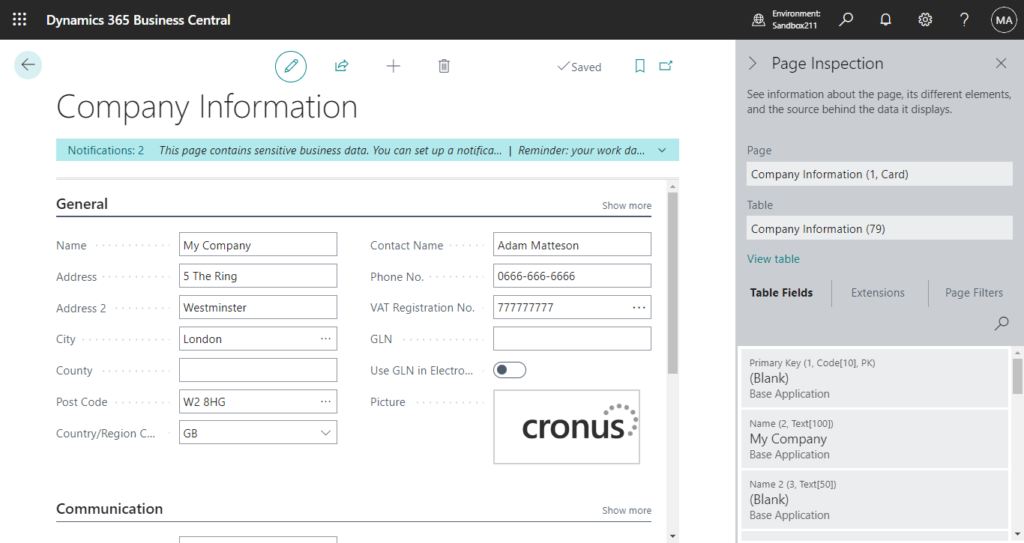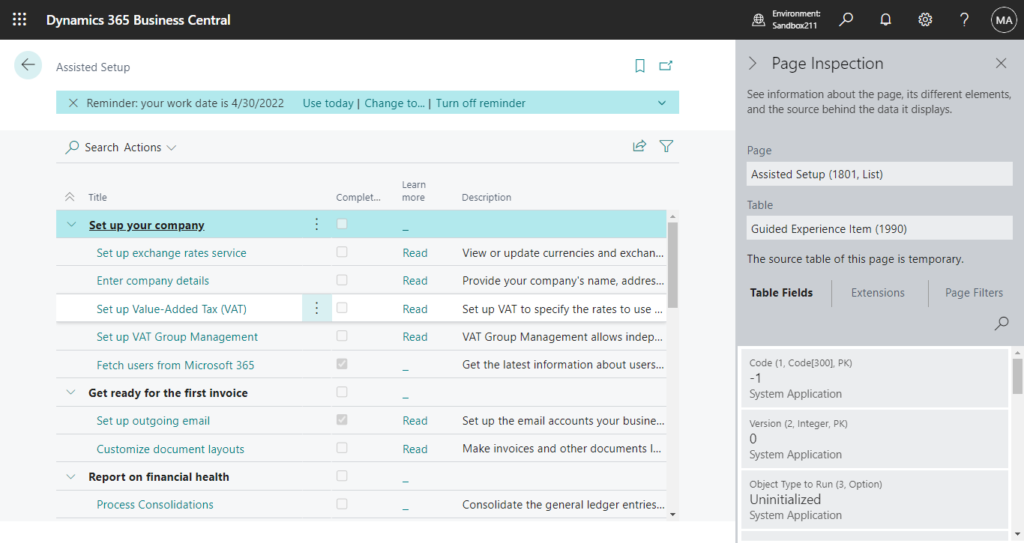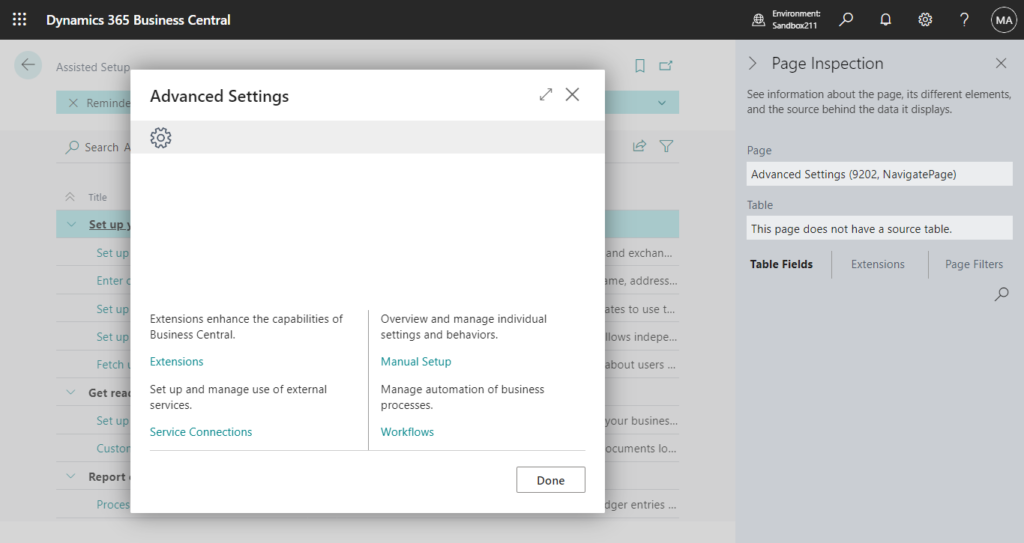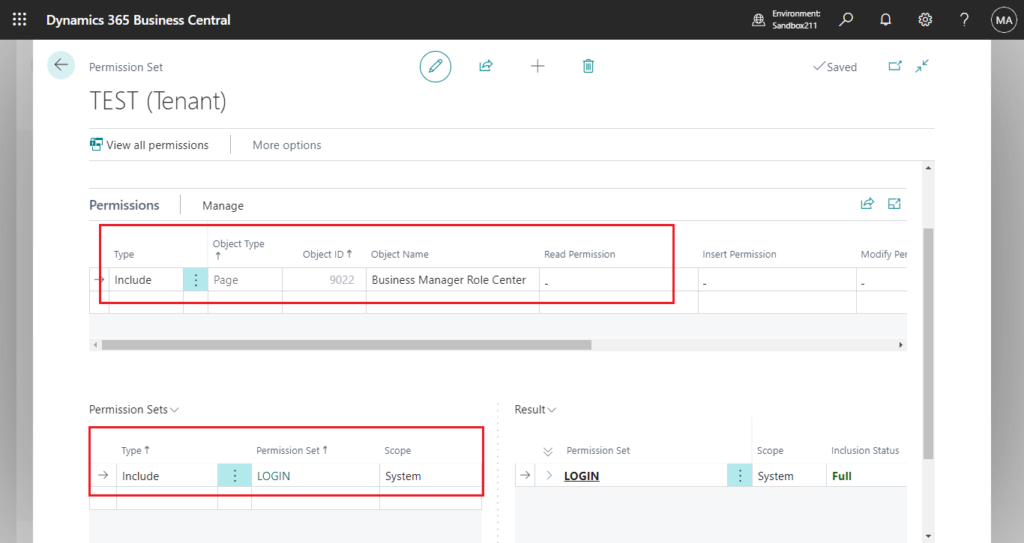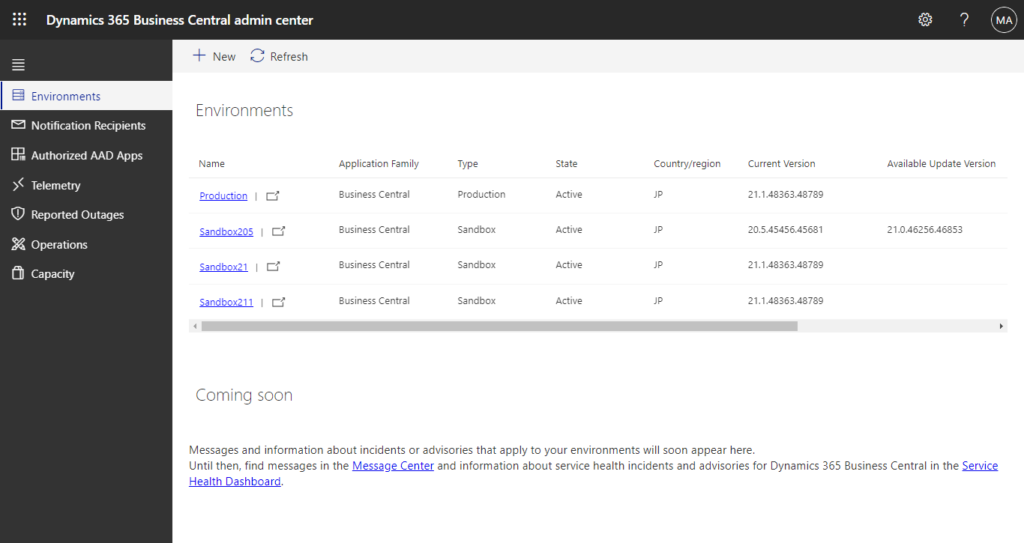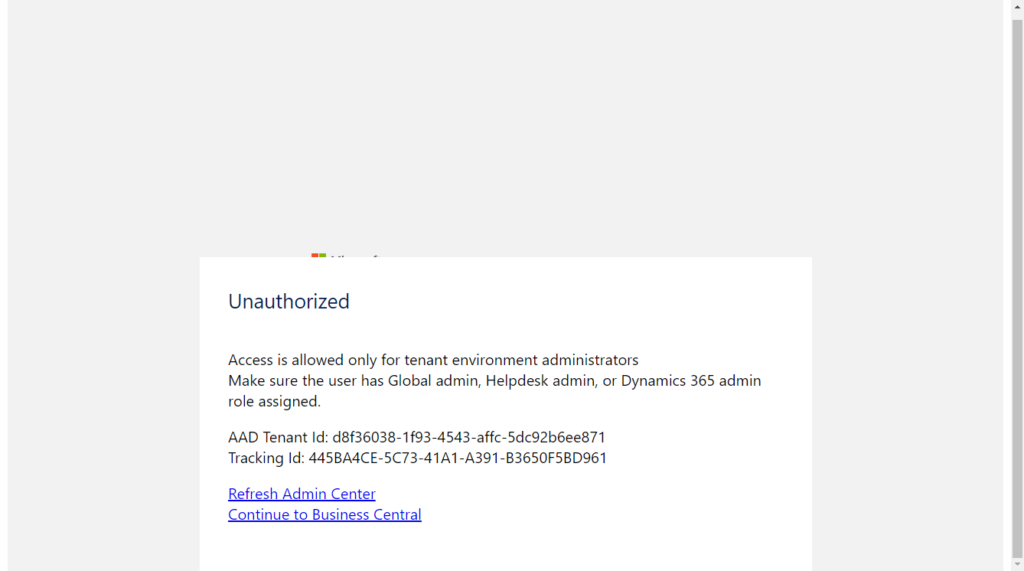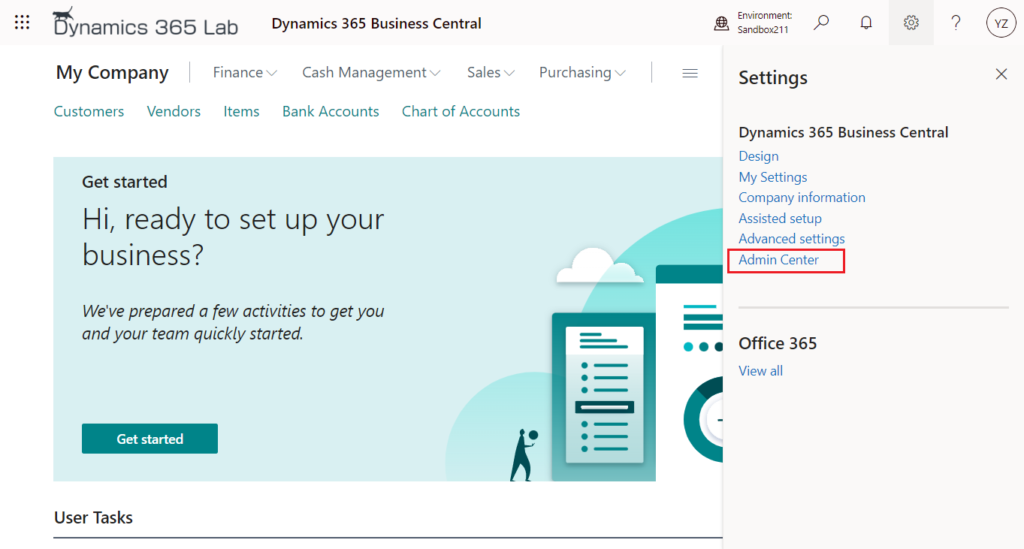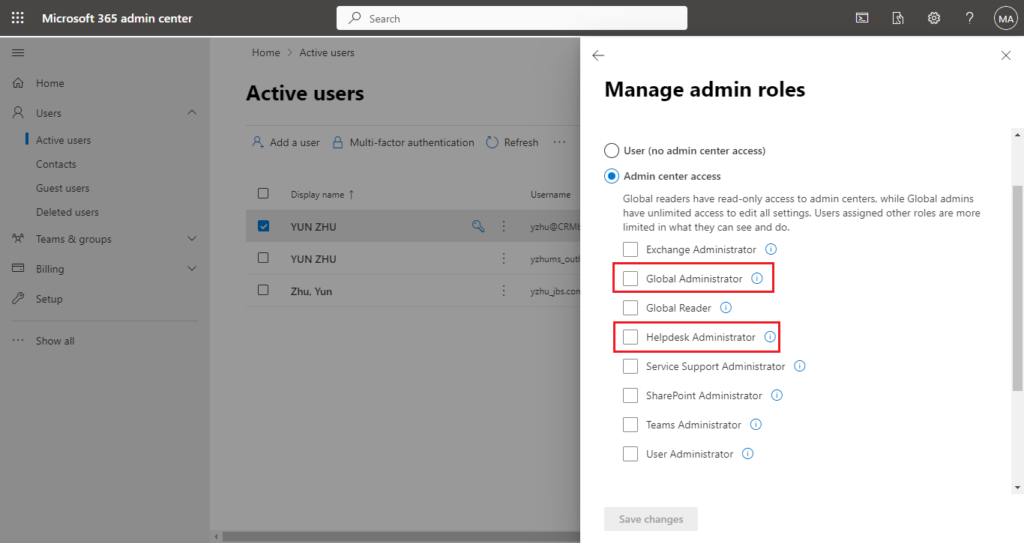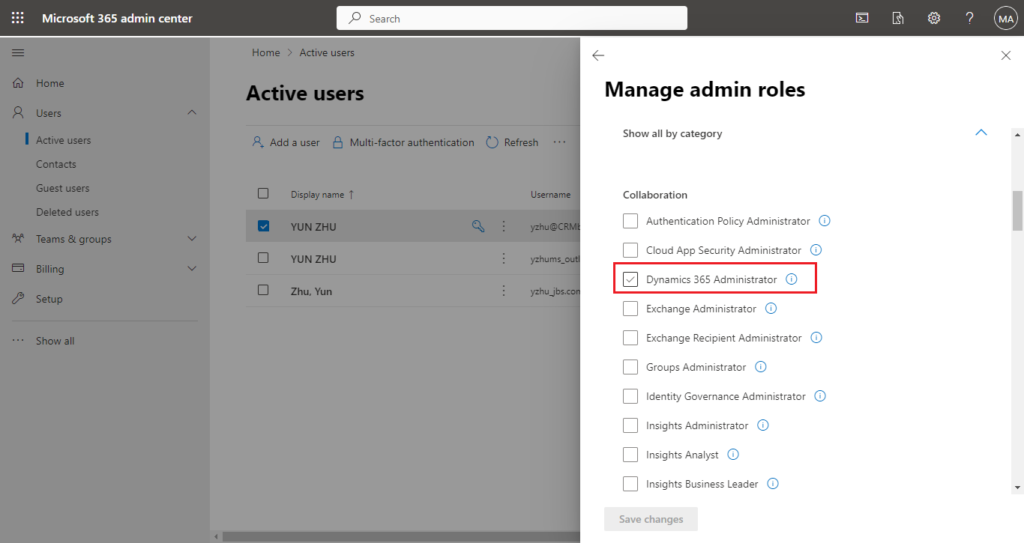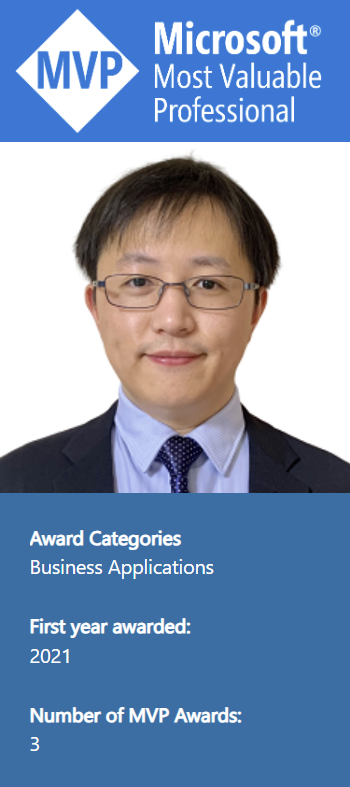Customize pages for profiles
Business Central provides both personalization for users and customization for administrators. Personalization allows users to tailor their workspace by adjusting page layouts to suit their own preferences. Administrators can customize page layouts for a specific profile, based on business roles or departments, so that all assigned users see the same customized page. While personalization allows users to show, hide, and move fields and actions on a page, customization offers extra capabilities. For example, customization allows you to show fields that are in the page's source table or extension tables but aren't defined on the page object—this isn't possible personalization.
Note
The typical business use of a profile is a role. A profile is therefore named Profile (Role) in the UI.
Page customization starts from the Profiles (Roles) page, the administrator's starting point for managing users' profiles on individual profile cards. In addition to customizing the page layout, you control various other settings for profiles on the Profile (Role) page for each profile. For more information, see Manage Profiles.
Prerequisites
Your Business Central account must have the D365 Profile Mgt. permission set or equivalent permissions.
The D365 Profile Mgt. permission set includes the execute permission on the system object 9026 Add Field to Table. If you don't have this permission, you're not allowed to add fields on the page unless they're defined on the page object.
Customize pages for a profile
Choose the icon, enter Profiles (Roles), and then choose the related link.
Select the line for the profile that you want to customize pages for, and then choose the Edit action.
Choose the Customize pages action.
Business Central opens on a new browser tab for the selected profile with the Customizing banner activated. The Customizing banner offers the same functionality as the Personalizing banner that is available to users.
Customize pages according to the needs of the role or department in question in the same way as a user would do when personalizing. For more information, see Personalize Your Workspace.
Note
To navigate during personalization, use Ctrl+Click on an action if it is highlighted by the arrowhead.
When you have finished changing the layout on one or more pages, choose the Done button on the Customizing banner.
Close the browser tab.
The customization of pages is now recorded for the profile.
View all customized pages for a profile
You can get an overview of which pages are customized for a profile, for example to plan which pages to customize further or delete.
On the Profile (Role) page, choose the Manage customized pages action.
On the Customized Pages page, you can delete customizations, and you can troubleshoot by scanning for potential issues.
Delete all customizations for a profile
You can cancel all customizations that you have made for a profile. Customizations introduced with an extension and personalizations made by a user aren't deleted. You can delete all personalizations with another action. For more information, see To delete all personalizations made by a user.
On the Profile (Role) page for a customized profile, choose the Clear customized pages action.
The layout on pages for the profile is reset to the default layout.
Delete customization for specific pages for a profile
You can delete individual page customizations that you have made for a profile. Customizations introduced with an extension and personalizations made by a user aren't deleted. You can delete specific page personalizations with another action. For more information, see To delete personalizations for specific pages.
On the Profile (Role) page, choose the Manage customized pages action.
On the Customized Pages page, select one or more lines for page customizations that you want to delete, and then choose the Delete action.
The layout on the selected pages is adjusted to the changes you made.
Add a field
You add fields to the page from the Add field to page pane, which you open by selecting the + Field action when in the customization mode. It's important to understand that the Add field to page pane is used to show fields that already exist—either on the page and its source tables,—but are currently hidden from view. You can't create new fields.
The Add field to page pane presents all fields that can be shown on the page. Fields are divided into the following categories, as determined by the underlying design of the page itself, its source table, and extensions:
Expand table
Category | Description |
|---|---|
Table fields not on the page object | Includes fields that are defined in the base table or extension tables, but aren't defined on the page. The tooltip for these fields includes the label Defined by the table. |
Page fields bound to a table | Includes fields that are defined in the base table or table extensions and are also defined on the page as either shown or hidden. The tooltip for these fields includes the label Defined by the page. |
Page fields that aren't bound to a table | Fields that are only defined on the page, not in the base table or extension tables. These fields typically used for variable or calculation. The tooltip for these fields includes the label Defined by the page. |
Use the filter button above the list to change what category of fields are presented the Add field to page pane.
Add table field that's not on the page object
If you want to make a table-only field available on a page to users, you must first add it to the page. Once you've added the field, users can choose to show or hide the field by using personalization. There are couple ways to add a field.
One way is to drag it from Add field to page pane to the desired position.
Another way is to select the field in the pane to display the recommended location on the page. Then go to the field location on the pages, select the arrowhead, then select Add.
Once the field has been added, the tooltip for the field in the Add field to page pane switches to Defined by the page.
Note
The added field is locked from editing and can't be unlocked.
Remove a field
If you've added a table field that originally wasn't on the page object, you can remove it again. Removing a field is different that hiding it. When you hide a field, users can still show it on their workspace through personalization. However, if you remove a field, the field is no longer available for users to show, or hide for that matter. If the field is currently displayed on a user's workspace, it disappears from their workspace when you remove it.
To remove a field, select the arrowhead on the field in the page and then Remove. If you can't find the field, select it in the Add field to page pane to indicate its hidden location.
Important
Removing a field doesn't delete data that's stored in the field or it's source tables. It just removes the field from view.
Lock and unlock editing
Customization allows you to lock (allow editing) or unlock editing (prevent editing) of most fields on a page. To lock or unlock editing, select the field on the page, select the arrowhead, and then select Lock editing or Unlock editing. It's important to keep in mind a few rules about locking and unlocking fields:
Field's that were originally not on the page object but were added to the page by customization are always locked, and can't be unlocked using customization or personalization.
The design of the field can also prevent it from being edited. If the AL developer set the field's Editable property to
false, it's always locked and can't be unlocked.It's important to note that the lock editing feature is intended to aid in the accuracy, consistency, and reliability of data. It's not intended to secure data integrity.
Important information and tips
Not all table fields may be available for customization from the Add field to page pane. The developer of a table can choose to prevent a field from appearing in customization by setting the field's AllowInCustomization property to
false.You can't customize a page that's in analysis mode. The Analyze switch is deactivated. If you switch to customization mode while the page is in analysis mode, then analyze mode is automatically switched off.
Some pages have multiple page fields that map to the same source table. The Add field to page pane shows all of these page fields independently. You can show, hide, or move these fields independently without affecting the others.
If a part or group is hidden, you can still identify hidden fields inside the part or group, but you can't add, move or show fields in the part or group until they're made visible.
Design
Designer in Dynamics 365 Business Central provides an easy and convenient way to make immediate changes to your design by dragging and dropping the components on the page.
Designer is currently only available from a Dynamics 365 Business Central Sandbox and On-Premises.
How to deploy your Design Extension (.zip file) to production environment
Accessing Designer is controlled on a user or user group basis by the EXTEND. MGT. – ADMIN / D365 EXTENSION MGT permission set.
If a user is assigned this permission set, then Designer is available for the user in the client. To prohibit a user from using Designer, just remove the user from the EXTEND. MGT. – ADMIN / D365 EXTENSION MGT permission set.
Note:
It is important that the
EXTEND. MGT. – ADMIN permission set does not have a company specified; otherwise the user will not be able to access Designer.
The
EXTEND. MGT. – ADMIN permission set was introduced in Business Central 2021 release wave 1 as a replacement for the D365 EXTENSION MGT permission set in earlier versions.
More details: Controlling user access to Designer
My Settings & Company information & Assisted setup & Advanced Settings
My Settings: On the My Settings page, you can see and change basic settings for Business Central. The changes that you make will only affect your workspace, not the workspaces of other users.
For example, Role Center, Company, Work Date, etc.
Company information: Business Central organizes business entities in companies. For each company, you must fill in some of the basic company details and relevant information on the Company Information page. The information on the Company Information page is used in documents, such as invoice headers. You can set up more than one company, such as a parent company and a subsidiary.
Assisted setup: Assisted Setup is a collection of wizards that guides you through a setup process. As a developer, you can create your own wizard pages. Occasionally, you might be required to create wizards and integrate them with the Assisted Setup feature when you publish an app by using Microsoft AppSource.
Advanced Settings: This page shows all the registered entries in the advanced settings page.
For these four pages, As of now we cannot hide them on the Settings menu, but because they are just simple pages, we can use permission sets to restrict users from opening them.
For example, these pages cannot be opened for users with minimal permission (LOGIN Permission Set and Business Manager Role Center permission).
More details: Controlling access to My Settings (Role, Company, Work date…)
PS:
We can also use new
Permission Exclusion (Exclude in Permission Set) feature to restrict user permissions.
This can also be done with simple customization.
For example, only super user can open Advanced Settings page:
Source code:
pageextension 50100 MyExtension5 extends "Advanced Settings"
{
trigger OnOpenPage()
var
UserPermissions: Codeunit "User Permissions";
begin
if not UserPermissions.IsSuper(UserSecurityId()) then
Error('Only super user can open Advanced Settings!');
end;
}Copy
Admin Center
The Business Central administration center provides a portal for administrators to do administrative tasks for a Business Central tenant.
The following users are authorized to access the Business Central administration center:
Internal tenant administrators
Admin agent
Helpdesk agent
When a user without permission tries to access the Admin Center, the following error will be prompted.
Access is allowed only for tenant environment administrators
Make sure the user has Global admin, Helpdesk admin, or Dynamics 365 admin role assigned.
More details: The required roles/permissions to access Business Central Admin Center
So if you want to hide this setup in the settings menu.
You only need to remove the following three roles in Microsoft 365 admin center.
Users will then not be able to see this setting.
END
Hope this will help.
Thanks for your reading.
ZHU
Dynamics 365 Business Central English
BC Business Central Dynamics Dynamics 365 Dynamics 365 BC Dynamics 365 Business Central Microsoft MSDyn365 MSDyn365BC
Share
TwitterFacebookHatena BookmarkLINELinkedInCopy
Follow YUN ZHU on socials
関連記事
Dynamics 365 Business Central: How to control the amount of information that is visible on a page (Importance Property – Show More and FastTab)
Developers Learning Catalog for Dynamics 365 Business Central
Dynamics 365 Business Central: Using Word Templates (Enablement of Word merge)
Business Central 2021 wave 2 (BC19) new features: Unlock time sheets in Business Central using assisted setup and data entry on mobile devices
Dynamics 365 Business Central: How to import Dimension Combinations
How to access Dynamics 365 Business Central admin center from the URL without Tenant ID
コメント
Write a comment
Microsoft MVP for Business Applications
Dynamics 365 Business Central Expert
Business Central / NAV developer
Recent Posts
Business Central 2024 wave 1 (BC24): Folding usings (Collapses all of the using statements)
Business Central 2024 wave 1 (BC24): Use currencies when posting employee transactions
Categories
Popular articles
Using OAuth to connect Business Central APIs and Web Service in Postman
Download Microsoft Dynamics 365 Business Central On-Premises (All Versions) - Direct download links
Standard API for Dynamics 365 Business Central SaaS (Get, Post, Patch, Delete and Basic query parameters - filter, orderby, select...)
How to import data to Business Central by uploading a file with Power Automate (No customization)
Dynamics 365 Business Central: How to use String Functions in AL (StrPos, CopyStr, PadStr, StrLen, LowerCase, SelectStr...)
Archives
Select Month March 2024 (14) February 2024 (19) January 2024 (17) December 2023 (19) November 2023 (18) October 2023 (23) September 2023 (61) August 2023 (22) July 2023 (15) June 2023 (22) May 2023 (19) April 2023 (28) March 2023 (40) February 2023 (19) January 2023 (18) December 2022 (21) November 2022 (20) October 2022 (23) September 2022 (48) August 2022 (20) July 2022 (20) June 2022 (23) May 2022 (17) April 2022 (19) March 2022 (45) February 2022 (17) January 2022 (19) December 2021 (16) November 2021 (19) October 2021 (22) September 2021 (32) August 2021 (23) July 2021 (21) June 2021 (25) May 2021 (19) April 2021 (24) March 2021 (35) February 2021 (22) January 2021 (25) December 2020 (21) November 2020 (29) October 2020 (43) September 2020 (56) August 2020 (40)
Copyright © 2020-2024 Dynamics 365 Lab All Rights Reserved.
Source code:
pageextension 50100 MyExtension5 extends "Advanced Settings"
{
trigger OnOpenPage()
var
UserPermissions: Codeunit "User Permissions";
begin
if not UserPermissions.IsSuper(UserSecurityId()) then
Error('Only super user can open Advanced Settings!');
end;
}Copy
Admin Center
The Business Central administration center provides a portal for administrators to do administrative tasks for a Business Central tenant.
The following users are authorized to access the Business Central administration center:
Internal tenant administrators
Admin agent
Helpdesk agent
When a user without permission tries to access the Admin Center, the following error will be prompted.
Access is allowed only for tenant environment administrators
Make sure the user has Global admin, Helpdesk admin, or Dynamics 365 admin role assigned.
More details: The required roles/permissions to access Business Central Admin Center
So if you want to hide this setup in the settings menu.
You only need to remove the following three roles in Microsoft 365 admin center.
Users will then not be able to see this setting.

